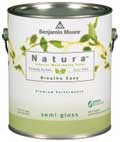Air quality
LORRAINE ALEXANDERInspired Interior Design
Indoor air quality
What is IAQ?
Indoor air quality (IAQ) is a term referring to the air quality within and around buildings and structures, especially as it relates to the health and comfort of building occupants. IAQ can be affected by microbial contaminants (mold, bacteria), gases (including carbon monoxide, radon, volatile organic compounds), particulates, or any mass or energy stressor that can induce adverse health conditions. Indoor air is becoming an increasingly more concerning health hazard than outdoor air. Using ventilation to dilute contaminants, filtration, and source control are the primary methods for improving indoor air quality in most buildings.
Are buildings making us sick?
Yes, say a staggering number of indoor air quality specialists in academia and in government agencies. Off-gassing, allergens, dust and poor air filtration and mold are just a few of the concerns. Indoor air quality test kits are available through Air Quality Sciences, Inc. For a healthier greener home environment, Air Quality Sciences produces a variety of indoor air quality test kits to screen for molds and other allergens, as well as VOCs and formaldehyde. These self-administered kits are simple to use and fairly economical. Results are analyzed by Air Quality Sciences, including comparisons to existing standards, and delivered in an easy-to-read report. What makes this product green? It warns the occupants of health hazards.
- Air filtration is an important part of HVAC (heating, ventilation, and air conditioning) design. Quality products should have high filtration efficiency over a range of particle sizes, be energy-efficient (low pressure drop across filters) and durable. Measures of filtration defined by ASHRAE standards include arrestance efficiency, dust-spot efficiency, and Minimum Efficiency Reporting Value (MERV) ratings. High-efficiency particulate air (HEPA) filters are designed to capture extremely fine particulates but require increased duct pressure, which may necessitate an oversized mechanical system. Some lower-efficiency filters use recycled materials or are washable.
- Reduce airborne allergens by product selection, air filtration and a good vacuum system.
- Material selection with little or no off-gassing. Use of natural products in your home whenever possible. When most paints claim to be zero-VOC, they aren't, including the colorants, which can contain as much as 150 grams of VOC per liter. Benjamin Moore’s Natura colorant is just one example that contains no VOCs.
- Plan your new construction or remodel installation to reduce risk and unnecessary off-gassing in your home.
Benjamin Moore & Co.
 Benjamin Moore’s Natura line of low-VOC paints and primers are made for residential and light
commercial applications. These spatter-resistant paints dry quickly with little odor. Natura contains
a proprietary 100 percent acrylic resin that, according to the company, will meet the Master Painter
Institute's Green Performance standard as well as Green Seal’s 2009 GS-11 standard covering chemical
content and paint performance—though Benjamin Moore has decided to seek its own independent testing
and will not be applying for MPI or GS-11 certification. While most zero-VOC paints use colorants
containing as much as 150 grams per liter, Natura uses Benjamin Moore's own Gennex zero-VOC colorants.
Natura is available as a primer as well as in flat, eggshell, and semi-gloss. Benjamin Moore also offers "Aura" which is zero-VOC and is Greengaurd approved.
Benjamin Moore’s Natura line of low-VOC paints and primers are made for residential and light
commercial applications. These spatter-resistant paints dry quickly with little odor. Natura contains
a proprietary 100 percent acrylic resin that, according to the company, will meet the Master Painter
Institute's Green Performance standard as well as Green Seal’s 2009 GS-11 standard covering chemical
content and paint performance—though Benjamin Moore has decided to seek its own independent testing
and will not be applying for MPI or GS-11 certification. While most zero-VOC paints use colorants
containing as much as 150 grams per liter, Natura uses Benjamin Moore's own Gennex zero-VOC colorants.
Natura is available as a primer as well as in flat, eggshell, and semi-gloss. Benjamin Moore also offers "Aura" which is zero-VOC and is Greengaurd approved.
Click this link to visit a list of safe products tested by "Greengaurd".
